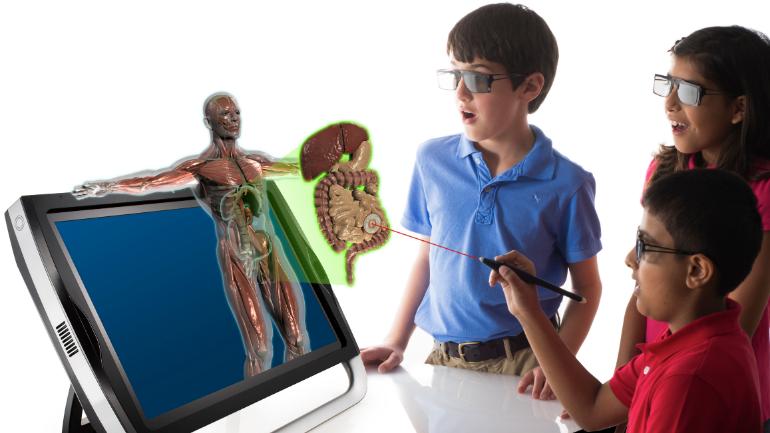Virtual learning and 3D tech in schools have proven to be a mixture of success and failure over the last year. Some students adjusted, but mostly studying from home was a massive challenge. In fact, many school districts were forced to change their student performance standards. Simply because of the high number of failing grades students were receiving.
According to a study, current forms of virtual learning, particularly those based on video calling, actually widen learning gaps. However, don’t make the mistake of blaming technology for these educational difficulties.
New solutions are, in fact, desperately needed. Students must be able to learn effectively both in and out of the classrooms.
Mixed Reality
One practice that improves the situation is the formation of mixed reality simulations. Using a fusion of 3D and VR/AR (virtual reality / augmented reality) technology. Vr technology, like interactive classrooms, enables students to explore areas of learning that might otherwise be unthinkable. Mixed reality, on the other hand, accomplishes this through the use of a mixture of VR/AR headsets and 3D scanning.
Mixed reality generates models of objects that can be explored from any perspective, across all 3 axes. Simply moving a cursor, also if 3D scanning is used, by body movements. Indoor/outdoor areas can also be scanned and recreated using 3D scanners for simulated walk-throughs.
Advancements and animations on the simulated 3D model can generate “x-ray perceptions”. As well as demonstrate changes with time, the effect of stacking, as well as other features. 3D detectors will track the mobility of people through the area in mixed reality indoor or outdoor setups. Teachers, for example, can perform demo and experiments that might otherwise be extremely expensive or perhaps even dangerous.
On a different side, three-dimensional scanning technologies have enabled 3D printing for a variety of applications. Ranging from biology and genetics to design and engineering.
Immersive learning environments
Hands-on learning enabled by depth sensors is among the most important developments in the education system. Immersive illustrations would be projected on the wall surfaces, ceilings, floors, and other similar surfaces of rooms or similar areas. And therefore these areas are supported by depth sensors that track student movement
Immersive classrooms try to involve students in the surroundings they are studying. As students virtually walk through building structures, explore the jungle, create simulation models, and even travel the world, the course content takes on a whole new element. Rooms are completely interactive; students can touch and press the walls and floor, move around, jump, and do other activities, which are “interpret” by the 3D detectors in the room. Teachers can improve the audio-visual experience by including smell and taste and other sensory effects.
3d virtual technology also provides a healing experience for students with sensory and ADHD issues. A room like this can provide shared environments that enable mental progress and a passion for learning in any youngster.

3D tech in schools – Prospects for the Future
While there are significant challenges to student engagement from home, they are not impossible to overcome. Because of household computer games, Virtual reality headsets are already in numerous households and cost a small fraction of laptops. As they become more popular, students will quickly be able to explore most of the same interactive and mixed reality options from the comfort of their own homes. This type of proactiveness is a significant improvement over video-conferencing and will help individuals to seamlessly transition between the classroom and home lessons.
3d virtual learning is set to take a further giant leap in the coming years. Google is now testing Project Starline, a “magic window” that allows professors, speakers, and visitors to teach in real-time from almost anywhere using a high-resolution 3D display that is practically completely undetectable. Studies in the field and real-time events from all over the globe might be viewed in 3D without the need for headgear, an innovation that will transform learning into aspects that are yet to be envisioned.
3D tech in schools -It’s time to get started
COVID-19 took the education system off guard and unprepared to handle virtual learning; however, this will improve. 90 percent of teachers believe that virtual reality and augmented reality will play an essential role in providing a personalized education in the future.
3D technology is a cost-effective and practical approach for institutions to develop learning opportunities that go far beyond sitting in a chair in a classroom—and they can happen anyplace, in a variety of situations. Virtual learning isn’t going away anytime soon. To keep moving forward; It has to be researched, developed, and deployed further. Learning has always been about the future, and the moment has come to embrace the dream of digital learning.

